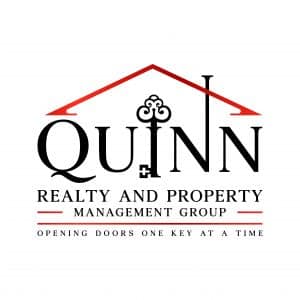Optimizing Residential Property Monitoring Procedures for Long-Term Profitability and Renter Retention

Efficient Communication Approaches
Clear and effective communication makes sure that all stakeholders, consisting of home proprietors, tenants, maintenance team, and management, are on the exact same web page, leading to smoother procedures and enhanced occupant contentment. Home supervisors need to clearly describe lease terms, upkeep treatments, and interaction channels to avoid misunderstandings down the line.
Using modern technology can also significantly improve interaction performance in residential or commercial property administration. Applying property administration software application that permits real-time updates, automated alerts, and very easy documents can streamline communication processes and improve overall operational effectiveness. Additionally, regular communication via numerous networks such as e-mail, telephone call, and in-person conferences can assist promote favorable partnerships with lessees and address any concerns without delay.
Modern Technology Assimilation for Upkeep
In the world of building monitoring optimization, a vital element that improves operational efficiency and upkeep processes is the combination of technology for streamlining upkeep jobs. By integrating technology right into upkeep operations, residential or commercial property managers can take advantage of enhanced work order management, aggressive maintenance scheduling, and boosted communication with maintenance groups and occupants.
One significant benefit of innovation integration in upkeep is the capability to centralize job orders and track maintenance requests electronically. This improves the procedure of getting, assigning, and finishing maintenance jobs, resulting in quicker response times and boosted tenant contentment. Anticipating maintenance modern technologies can help in determining potential problems prior to they rise, decreasing the chance of costly repair services and minimizing downtime.

Data-Driven Choice Making
Using data-driven understandings equips property supervisors to make enlightened decisions that maximize operational performance and take full advantage of asset performance. Quinn Realty and Property Management. By leveraging information analytics tools and modern technologies, home supervisors can extract useful information from different resources such as renter comments, upkeep records, and market patterns. This information can provide important understandings into renter choices, functional bottlenecks, and cost-saving chances
Data-driven decision-making makes it possible for property managers to determine patterns and fads that might not appear with typical observation. Analyzing upkeep information may expose reoccuring issues in certain units, allowing managers to proactively deal with underlying problems and avoid future pricey repairs. Furthermore, by keeping an eye on occupant contentment metrics and lease revival prices, building supervisors can customize their solutions to satisfy renter expectations, ultimately boosting lessee retention and lasting earnings.
Furthermore, data-driven understandings can likewise inform critical investment decisions by highlighting locations for enhancement or expansion based upon market demand and efficiency metrics. Generally, incorporating data-driven decision-making procedures into property monitoring operations can bring about a lot more efficient source allotment, boosted renter satisfaction, and boosted success in the future.
Renter Contentment Efforts
Attracting understandings from data-driven decision-making, residential property managers can carry out targeted tenant satisfaction efforts to boost overall leasing experiences and foster long-lasting tenant connections. By recognizing renter choices and discomfort points, building managers can tailor their solutions to meet the particular demands of their renters, eventually bring about higher fulfillment degrees and increased renter retention prices.
One reliable lessee complete satisfaction effort is to develop clear lines of interaction with tenants to deal with any type of problems without delay. Regular feedback surveys can likewise supply beneficial understandings right into tenant complete satisfaction levels and areas for enhancement. Residential property supervisors can utilize this responses to make essential changes and reveal tenants that their opinions are valued.

Additionally, organizing neighborhood events and amenities that accommodate the interests of lessees can develop a feeling of belonging and improve overall my company satisfaction. By fostering a appealing and positive area setting, residential property managers can strengthen lessee connections and motivate long-term leases, inevitably improving success and tenant retention in the future.
Enhancing Operational Procedures
One key element of enhancing functional processes is the integration of innovation remedies such as property administration software application, which can automate jobs, simplify interaction, and provide real-time data insights. By digitizing processes like maintenance requests, lease collection, and lease revivals, building supervisors can conserve time, lower mistakes, and boost tenant complete satisfaction.
Furthermore, carrying out standard procedures and process can assist produce consistency across homes, minimize confusion, and improve daily operations. Routinely evaluating and enhancing these processes is important click here to find out more to adapt to changing market problems, lessee requirements, and regulative demands. By continuously seeking methods to improve operational procedures, building supervisors can not only enhance their own performance however likewise deliver far better solutions to tenants, ultimately causing long-term earnings and lessee retention.
Final Thought
In final thought, enhancing building management procedures via reliable interaction, innovation integration, data-driven choice production, lessee fulfillment efforts, and enhancing processes is necessary for lasting productivity and renter retention. By applying these strategies, residential property supervisors can improve operational performance, minimize expenses, and enhance lessee fulfillment, ultimately bring about enhanced profitability and renter loyalty. It is crucial for residential property administration firms to constantly assess and readjust their operations to meet the evolving demands of both occupants and the marketplace.
Clear and efficient communication makes certain that all stakeholders, including home proprietors, lessees, upkeep staff, and monitoring, are on the same web page, leading to smoother operations and increased tenant fulfillment - Quinn Realty and Property Management. By checking lessee fulfillment metrics and lease renewal rates, residential property managers can tailor their services to satisfy lessee expectations, eventually enhancing tenant retention and long-term earnings
By continually seeking means to streamline operational visit site procedures, residential property supervisors can not just boost their own effectiveness but additionally deliver far better services to lessees, ultimately leading to lasting productivity and tenant retention.
In conclusion, maximizing building administration operations with efficient communication, technology combination, data-driven choice making, lessee complete satisfaction initiatives, and simplifying procedures is important for long-lasting profitability and occupant retention (Quinn Realty and Property Management). By implementing these approaches, building managers can enhance functional effectiveness, decrease costs, and enhance occupant complete satisfaction, ultimately leading to raised earnings and renter commitment